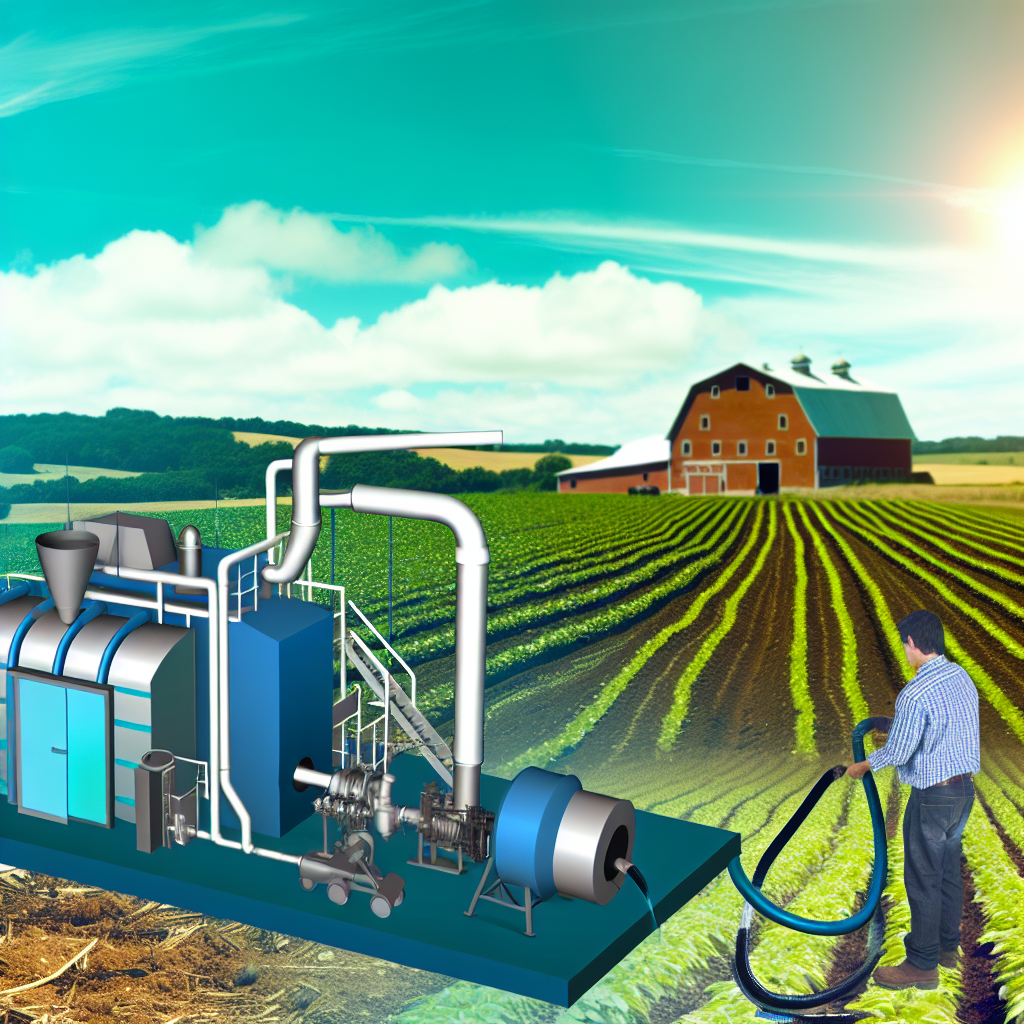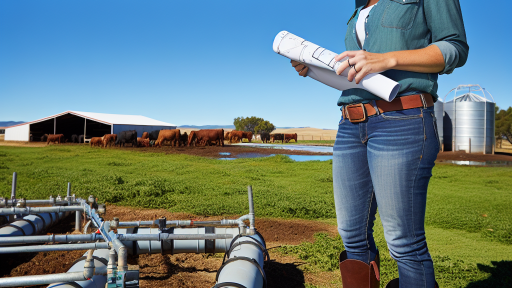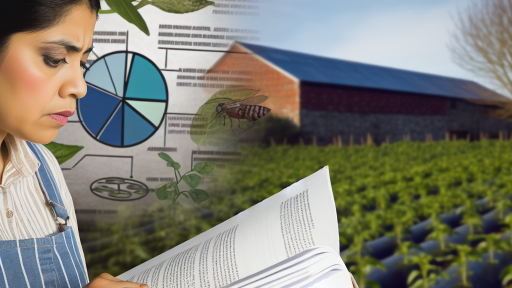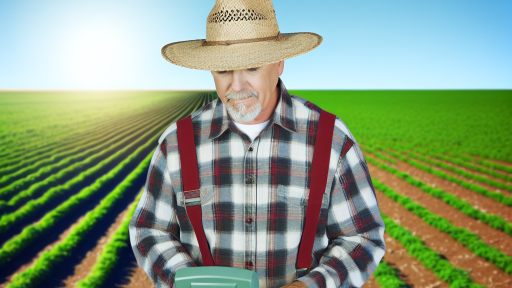Overview of Waste-to-Energy Technologies in Agriculture
Introduction to Waste-to-Energy
Waste-to-energy technologies convert agricultural waste into valuable energy sources.
This process reduces landfill use and provides renewable energy solutions.
Farmers can enhance sustainability by adopting these technologies.
Types of Waste-to-Energy Technologies
Several technologies are available for waste-to-energy conversion in agriculture.
The most common methods include anaerobic digestion, combustion, and gasification.
Anaerobic Digestion
Anaerobic digestion breaks down organic matter in the absence of oxygen.
This process produces biogas, which can be used for heat and power.
Additionally, farmers can utilize the digestate as a nutrient-rich fertilizer.
Combustion
Combustion involves burning agricultural waste to generate energy.
This method converts biomass into heat, steam, or electricity.
It is particularly effective for managing large quantities of waste.
Gasification
Gasification transforms organic material into synthetic gas or syngas.
This process operates at high temperatures with limited oxygen.
Syngas can be used for electricity generation or as a feedstock for chemicals.
Benefits of Waste-to-Energy Technologies
Implementing waste-to-energy technologies offers numerous benefits for farms.
Transform Your Agribusiness
Unlock your farm's potential with expert advice tailored to your needs. Get actionable steps that drive real results.
Get Started- Reduces waste management costs and landfill dependence.
- Provides a renewable energy source to power farm operations.
- Minimizes greenhouse gas emissions, contributing to climate goals.
- Enhances soil health through the application of digestate.
Challenges and Considerations
Despite the benefits, challenges accompany the adoption of these technologies.
Initial investment costs can be significant for farmers.
Additionally, technical expertise is necessary for effective implementation.
Regulatory compliance and permitting can also pose hurdles.
Case Studies of Successful Implementation
Several farms have successfully integrated waste-to-energy technologies.
For instance, Green Valley Farms uses anaerobic digestion to power operations.
This initiative has reduced waste disposal costs and generated renewable energy.
Furthermore, Sunny Acres employs gasification to convert excess straw into syngas.
The resulting energy helps power their equipment and facilities.
Future Trends in Waste-to-Energy
As technology advances, waste-to-energy solutions will evolve further.
Innovations in efficiency and cost-effectiveness will likely emerge.
Moreover, regulatory frameworks may shift to support adoption.
Farmers should stay informed about developments in this field.
Types of Biomass Feedstocks Available on Modern Farms
Agricultural Residues
Agricultural residues are the leftover materials from crop production.
Crops like corn, wheat, and rice generate significant amounts of biomass.
Farmers can collect and process these residues into energy sources.
This practice not only reduces waste but also adds value to the materials.
Animal Manure
Animal manure is another valuable biomass feedstock on farms.
Dairy, poultry, and livestock operations produce vast quantities of manure.
This waste can be processed into biogas through anaerobic digestion.
In turn, the biogas can generate electricity and heat for farm operations.
Cover Crops
Cover crops play an essential role in improving soil health.
These crops can also be harvested as biomass feedstocks.
Farmers can plant species like clover and rye to enhance soil nutrients.
Showcase Your Farming Business
Publish your professional farming services profile on our blog for a one-time fee of $200 and reach a dedicated audience of farmers and agribusiness owners.
Publish Your ProfileAfter their growth cycle, these crops can serve as energy sources.
Food Processing By-Products
Food processing generates considerable amounts of organic waste.
Farms linked to food processors can utilize these by-products.
Examples include vegetable peels, seeds, and pulp from juice extraction.
These materials can be converted into biofuels or biogas.
Dedicated Energy Crops
Dedicated energy crops are specifically grown for biomass production.
Examples include miscanthus, switchgrass, and willow.
These crops are fast-growing and can yield high energy content.
Farmers can grow them on less productive land, optimizing overall farm output.
Forestry By-Products
Forests and woodlands also supply valuable biomass resources.
By-products from logging and lumber mills can be repurposed.
Bark, sawdust, and wood chips can be turned into energy.
This process helps manage waste while providing renewable energy sources.
Anaerobic Digestion: Process and Benefits for Farms
Understanding Anaerobic Digestion
Anaerobic digestion is a biological process that breaks down organic matter.
This process occurs in the absence of oxygen.
Microorganisms decompose biodegradable materials into biogas and digestate.
Biogas primarily consists of methane and carbon dioxide.
Diverse organic materials can be used, including manure, crop residues, and food waste.
How the Process Works
The process begins with collecting organic waste from farms.
This waste is then fed into a sealed tank called a digester.
As bacteria digest the waste, biogas forms and accumulates.
Farmers can capture and use this gas for energy.
After digestion, nutrient-rich digestate remains.
Farmers can apply this digestate as fertilizer on their crops.
Benefits of Anaerobic Digestion
Anaerobic digestion offers multiple benefits to modern farms.
- It helps reduce greenhouse gas emissions.
- Farmers can generate renewable energy for their operations.
- It decreases reliance on chemical fertilizers.
- The process minimizes waste and promotes sustainability.
Economic Advantages
The economic advantages of anaerobic digestion are significant.
Farmers can save on energy costs by using generated biogas.
Additionally, selling excess electricity can provide new income streams.
These systems often qualify for government incentives and grants.
Implementation Considerations
Implementing anaerobic digestion requires careful planning.
Farmers should assess available resources and waste production.
They must also consider the initial investment and operational costs.
Collaboration with experts can help optimize the setup.
Farmers should evaluate local regulations regarding waste management.
Delve into the Subject: Crop Rotation Strategies for Biodiversity
Incineration and Its Role in Waste Management for Farms
Overview of Incineration
Incineration involves burning waste materials to reduce their volume.
This process transforms waste into ash, flue gases, and heat.
It is a viable waste management option for modern farms.
Farm waste often includes organic materials and plastics.
Incineration can safely eliminate pathogens found in organic waste.
Showcase Your Farming Business
Publish your professional farming services profile on our blog for a one-time fee of $200 and reach a dedicated audience of farmers and agribusiness owners.
Publish Your ProfileBenefits of Incineration for Farming Operations
Farmers benefit from incineration by reducing waste volume significantly.
This reduction lowers transportation and landfill costs.
Moreover, incineration generates energy that can power farming operations.
The heat produced can even be used for greenhouse heating.
Additionally, it minimizes the environmental impact of waste disposal.
Challenges and Considerations
Despite its benefits, incineration has challenges that farmers must consider.
Emissions from incineration can include harmful pollutants.
Therefore, proper technology and equipment are essential.
Farmers must adhere to regulatory standards to ensure safety.
Furthermore, the initial setup costs can be high.
In some regions, public perception of incineration poses challenges.
Future of Incineration in Agricultural Waste Management
Innovative technologies are emerging to enhance incineration efficiency.
Advanced filtration systems can reduce harmful emissions significantly.
Moreover, farmers are increasingly exploring hybrid systems.
These systems integrate incineration with other waste management practices.
As regulations tighten, incineration may play a larger role in sustainability.
Ultimately, incineration can contribute to a circular economy in farming.
Learn More: Building a Zero-Waste Farm: Strategies and Tips
Gasification: Converting Farm Waste into Energy
Understanding Gasification
Gasification is a process that converts organic materials into gas.
This method of waste-to-energy helps reduce the volume of farm waste.
Farmers can utilize various waste types, including crop residues and manure.
This process enhances energy efficiency on modern farms.
Mechanics of Gasification
The gasification process begins by heating organic material.
This occurs in a low-oxygen environment to prevent combustion.
The result is syngas, a mixture of hydrogen and carbon monoxide.
Farmers can use syngas to generate electricity or heat.
Additionally, it can serve as a fuel for vehicles.
Benefits of Gasification for Farms
Gasification offers numerous advantages for modern farms.
- It reduces reliance on fossil fuels.
- Farmers can convert waste into a valuable resource.
- This process lowers greenhouse gas emissions significantly.
- Gasification enhances soil health through nutrient recovery.
Challenges in Implementing Gasification
Despite its benefits, gasification presents some challenges.
Initial setup costs can be high for farmers.
Moreover, ongoing maintenance of gasification systems is crucial.
Farmers may also face technical challenges in operating these systems.
Therefore, proper training and support are essential for success.
Case Studies of Successful Implementation
Many farms have successfully implemented gasification systems.
For instance, Willow Creek Farm in Ohio uses gasification effectively.
This farm converts its waste into syngas for energy needs.
Similarly, Green Acres Farm in California has reduced waste by 60%.
Such examples highlight the viability of gasification in agriculture.
Uncover the Details: Promoting Pollinators for Healthier Crops

Composting vs. Waste-to-Energy: Analyzing the Trade-offs
Introduction to Sustainable Options
Modern farms face the challenge of managing waste effectively.
Showcase Your Farming Business
Publish your professional farming services profile on our blog for a one-time fee of $200 and reach a dedicated audience of farmers and agribusiness owners.
Publish Your ProfileTwo main strategies have emerged: composting and waste-to-energy systems.
Understanding these options involves analyzing their advantages and drawbacks.
Overview of Composting
Composting transforms organic waste into nutrient-rich soil amendments.
This method reduces landfill waste significantly.
Additionally, composting improves soil health and supports plant growth.
Farmers can use compost to enhance crop yields reliably.
However, it requires space and a good management routine.
The Benefits of Composting
- Enriches soil with essential nutrients.
- Promotes a healthy ecosystem.
- Reduces greenhouse gas emissions from landfills.
Moreover, composting is a cost-effective solution for many farms.
It can also turn a liability into a valuable resource over time.
Limitations of Composting
- It requires time for decomposition.
- Not all organic materials are suitable for composting.
- Maintenance can be labor-intensive.
Consequently, some farms may struggle to implement it effectively.
Exploring Waste-to-Energy Solutions
Waste-to-energy systems convert waste into usable energy sources.
These systems often involve incineration or anaerobic digestion.
They can significantly reduce the volume of waste produced.
Moreover, waste-to-energy can generate electricity or heat.
This can supplement a farm’s energy needs sustainably.
Advantages of Waste-to-Energy
- Produces renewable energy from waste materials.
- Reduces dependency on fossil fuels.
- Minimizes waste disposal challenges.
This option can create a dual benefit of waste reduction and energy production.
Challenges of Waste-to-Energy
- High initial investment and operational costs.
- Requires advanced technology and infrastructure.
- Potential environmental concerns around emissions.
Farms need to assess whether these factors align with their goals.
Comparative Analysis of Trade-offs
Both options offer distinct benefits and challenges.
Farmers must consider their specific needs and resources.
Composting suits those prioritizing soil health and sustainability.
Conversely, waste-to-energy can support energy independence.
Ultimately, the choice depends on various factors.
These include economic capacity, available technology, and farm size.
Gain More Insights: Integrating Native Species on Your Farm
Economic Benefits of Implementing Waste-to-Energy Solutions
Reducing Operational Costs
Waste-to-energy systems can significantly reduce operational costs for farms.
By converting waste into energy, farms lower their reliance on external energy sources.
This leads to substantial savings on energy bills over time.
Generating Additional Revenue Streams
Implementing waste-to-energy technology opens new revenue opportunities for farms.
Selling excess energy back to the grid can create a profitable income source.
Additionally, farms can monetize byproducts such as digestate or ash.
Enhancing Sustainability and Marketability
Waste-to-energy solutions improve a farm’s sustainability profile.
Farmers can market themselves as environmentally responsible, attracting eco-conscious consumers.
This sustainability focus can enhance brand loyalty and customer retention.
Grant Opportunities and Incentives
Many governments provide financial incentives for renewable energy projects.
These grants can substantially offset initial investment costs for farmers.
Furthermore, tax credits are often available for energy-producing technologies.
Improving Waste Management
Waste-to-energy solutions streamline waste management practices on farms.
Efficient waste processing reduces landfill contributions and associated costs.
This helps farmers meet regulatory requirements and improve community relations.
Long-term Energy Security
Investing in waste-to-energy technology offers long-term energy security for farms.
Showcase Your Farming Business
Publish your professional farming services profile on our blog for a one-time fee of $200 and reach a dedicated audience of farmers and agribusiness owners.
Publish Your ProfileFarmers gain independence from fluctuating energy markets and prices.
This stability helps in planning and budgeting for future agricultural activities.
Case Studies: Successful Waste-to-Energy Projects on Farms
Innovative Solutions in Iowa
A farm in Iowa implemented an anaerobic digestion system.
This system converts manure into biogas.
The farm uses the biogas for electricity generation.
As a result, they decreased energy costs significantly.
Furthermore, the farm sold excess energy back to the grid.
Revolutionary Methods in California
A vineyard in California adopted biomass gasification technology.
They utilize grape pomace as feedstock for energy production.
This method not only reduces waste but also produces heat.
The heat is used for vineyard operations and irrigation.
Consequently, the vineyard operates more sustainably.
Successful Implementation in New York
A dairy farm in New York installed a combined heat and power system.
This setup produces both electricity and thermal energy.
Utilizing manure for this process has proven efficient.
The farm reduces its reliance on fossil fuels significantly.
Additionally, they achieve cost savings while benefiting the environment.
Community Impact in South Dakota
A community in South Dakota established a centralized biogas facility.
Local farms contribute organic waste to this facility.
The facility generates energy and provides digestate to farmers.
This collaboration fosters a circular economy approach.
As a result, community resilience and sustainability improve.
Additional Resources
How to Sustainably Feed 10 Billion People by 2050, in 21 Charts …
The Omnivore’s Delusion: Against the Agri-intellectuals | American …




